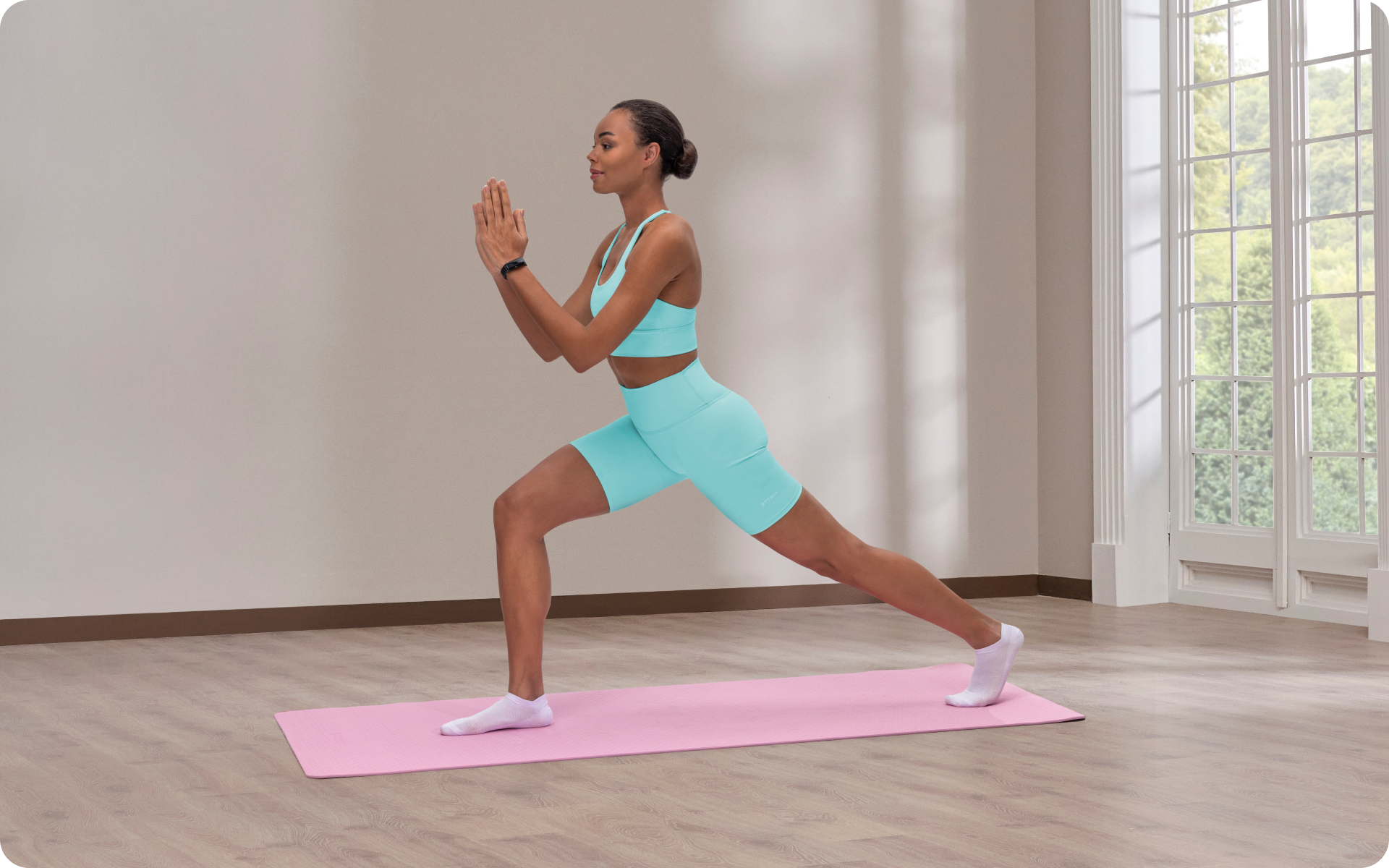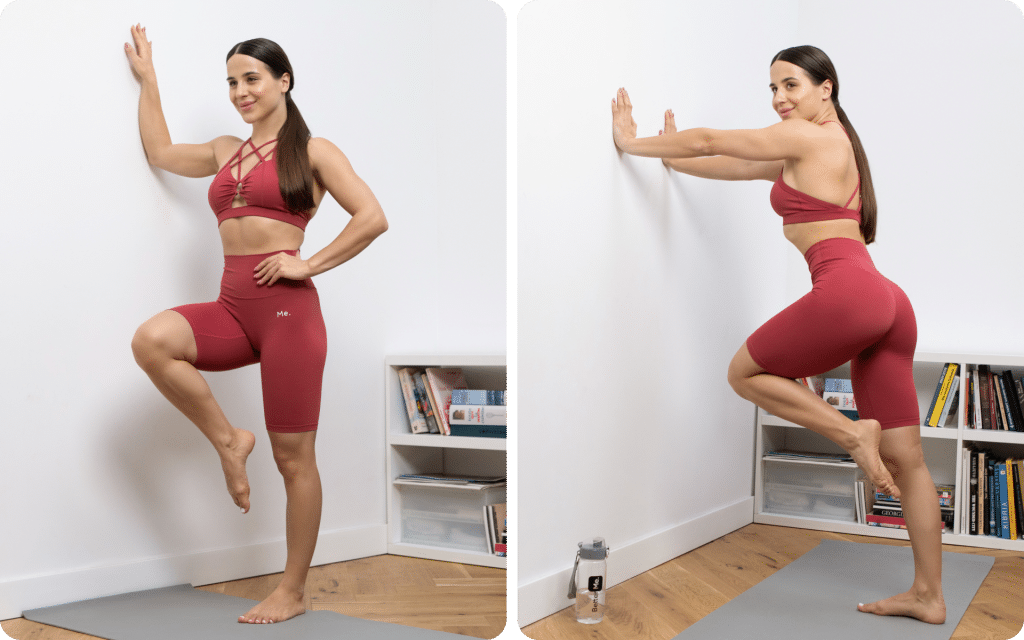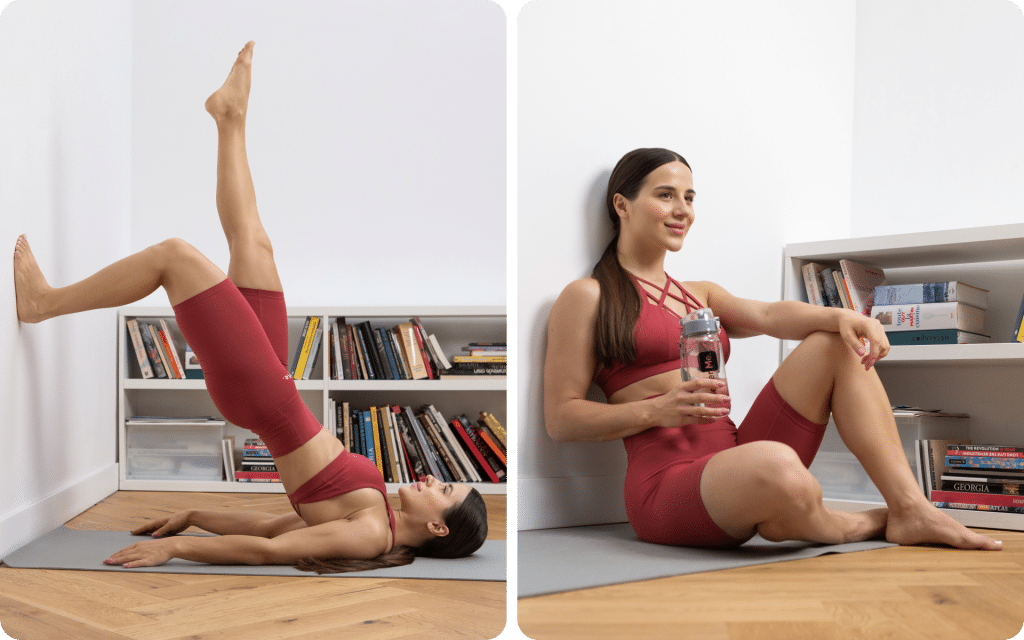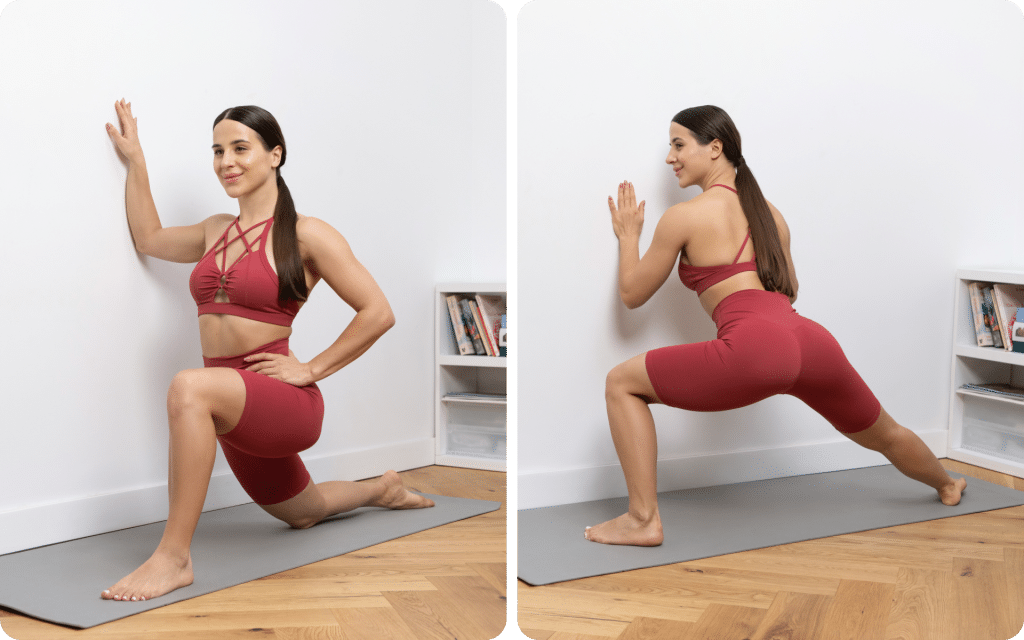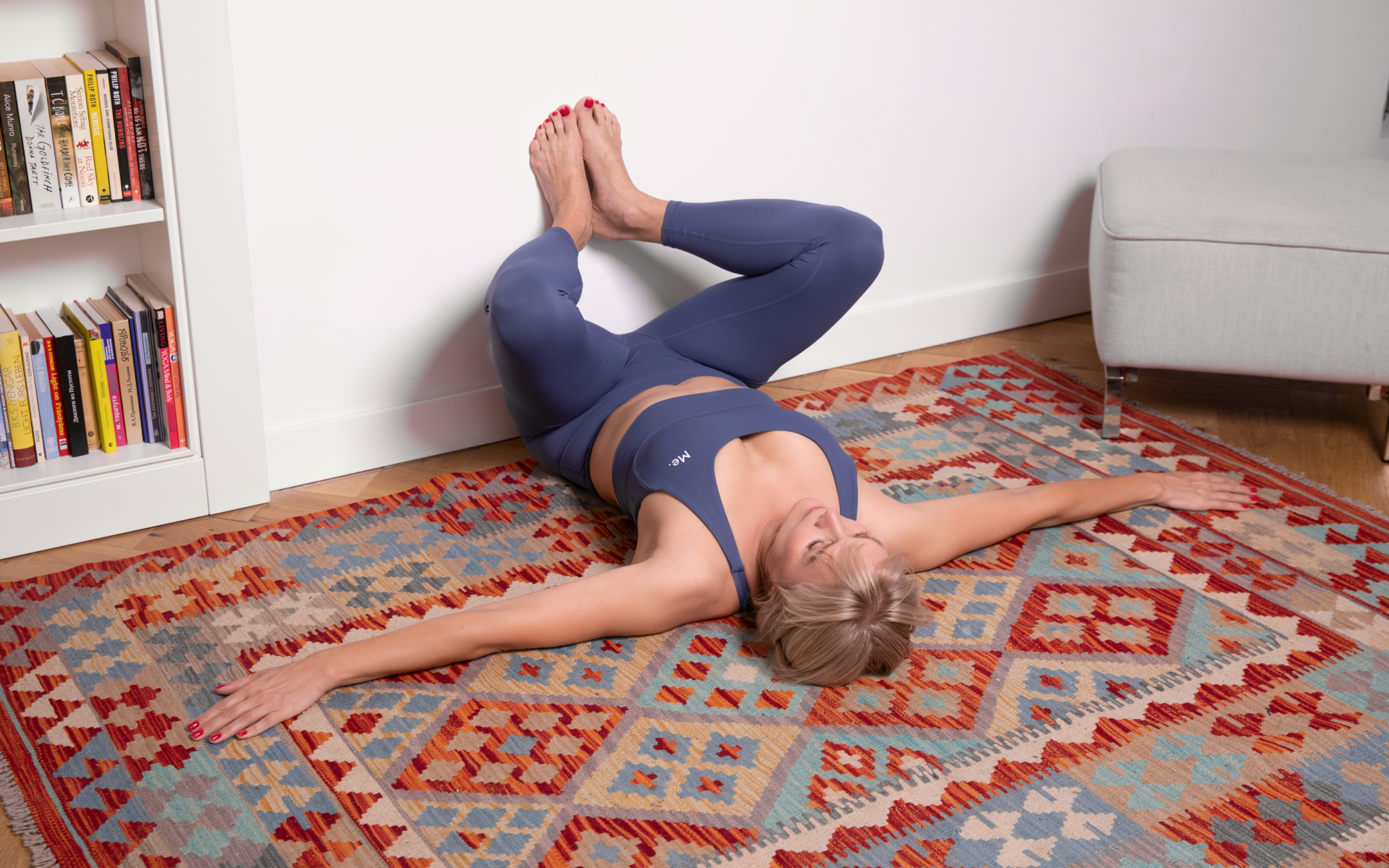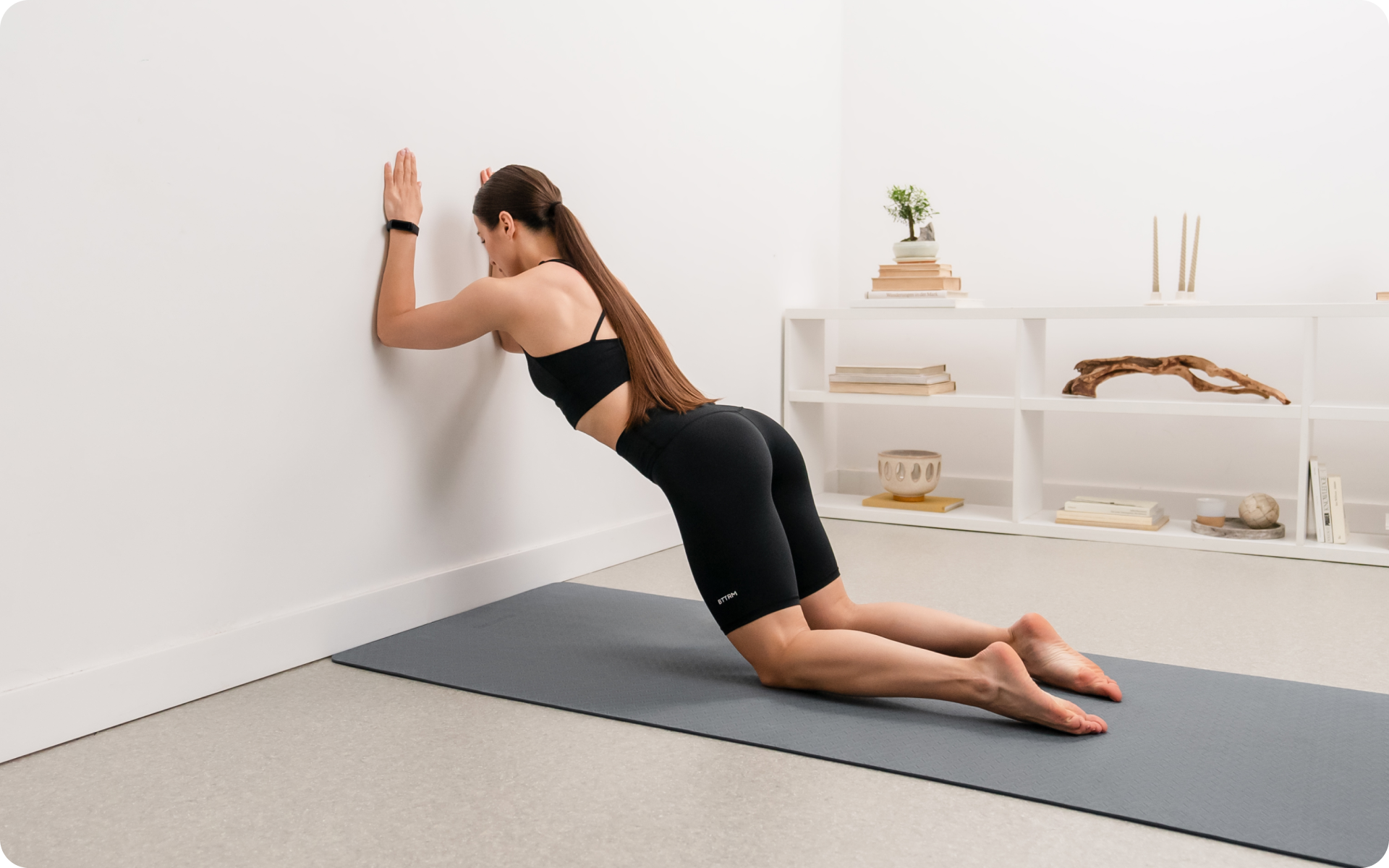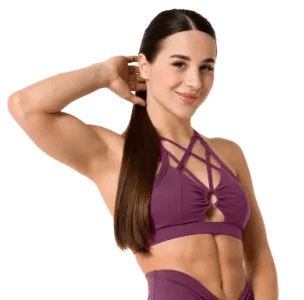Finding the right balance of movements can be a game changer for at-home workouts.
Yoga, at its core, is all about connecting the mind and body. It uses poses, breathing techniques, and mindfulness to build strength, flexibility, and balance. It’s as much about relaxation as it is about movement.
On the other hand, wall Pilates is a modern twist on Pilates, which focuses on controlled movements to strengthen your core and improve posture. The wall adds a level of support and resistance, which makes the exercises accessible but also challenging. It’s a great tool to target specific muscle groups while maintaining proper form.
Now, the big question – is combining these two ideal for your at-home fitness routine? While they come from different philosophies, they share key goals such as improving mobility, stability, and strength. They can certainly complement each other, offering variety and a well-rounded approach to fitness.
But is it necessary to merge them? Well, that depends on your personal goals, current fitness level, and how much time you have to invest.
Here’s what you need to know.
What Is a Yoga and Wall Pilates Combination?
A yoga and wall Pilates combination isn’t an official workout style but rather an idea that blends the principles of both practices into a single routine.
Combining the two would involve creating a workout that incorporates elements of strengthening, stretching, and enhancing the mind-body focus.
Those who are wondering how to combine yoga with wall Pilates at home would have to tap into the slow, intentional stretches of yoga and the targeted strength exercises of wall Pilates. For example:
- Starting a session with yoga poses to warm up the body and improve focus.
- Adding wall Pilates movements to challenge specific muscle groups and build core stability.
- Wrapping up with calming yoga stretches or breathing exercises to cool down.
The main idea is to pair the dynamic and mindfulness-based flow of yoga with the precision and core activation that wall Pilates offers. In theory, this would create a balanced workout that challenges your strength, flexibility, and focus, all while being adaptable to various fitness levels.
Can I Combine Yoga and Wall Pilates?
In a strict sense, you can absolutely combine yoga and wall Pilates into one workout. This fusion can offer unique benefits, but it also comes with some challenges. Here’s a closer look at the pros and cons to help you decide if this fusion is right for you.
Pros
- Improved Overall Fitness
Yoga enhances flexibility, balance, and mental focus. Wall Pilates targets core strength, posture, and muscle control. Together, they address multiple fitness components in one routine (1). - Variety in Workouts
A fusion adds diversity to your sessions. Alternating between slow yoga poses and controlled Pilates movements keeps things fresh and engaging (2). - Functional Benefits
Yoga’s stretches improve your range of motion, while wall Pilates builds strength in stabilizing muscles. This combination could enhance everyday movement patterns and reduce the risk of injury (1). - Mind-Body Connection
Yoga’s mindfulness techniques can integrate with the precision of Pilates to help you perform exercises with greater attention and control.
Reasons why BetterMe is a safe bet: a wide range of calorie-blasting workouts, finger-licking recipes, 24/7 support, challenges that’ll keep you on your best game, and that just scratches the surface! Start using our app and watch the magic happen.
Cons
- Learning Curve
Both yoga and Pilates demand proper technique. Combining them may feel overwhelming if you’re not familiar with one or both. - Risk of Overcomplication
Mixing two practices could complicate your routine unnecessarily. It may distract from focusing on specific goals like improving strength or flexibility. - Requires Guidance
To get the best results and avoid injury, you may need expert guidance. This could be difficult if you’re practicing alone at home. - Time Constraints
Merging two practices takes time. You may need longer sessions to effectively cover both styles.
Read more: 7 Exercises For A Pilates Resistance Bands Workout At Home
How to Incorporate Yoga and Wall Pilates
Combining yoga and wall Pilates can create a balanced, effective workout routine. To get the best results, divide your session into three parts. Start with yoga to warm up, focus on wall Pilates for strength training, and finish with yoga for cool-down and recovery. Below is a step-by-step guide you can follow:
1. Warm-Up with Yoga
Yoga is a great way to prepare your body for movement (3). It stretches your muscles, improves circulation, and helps you focus. Spend 5-10 minutes on the following exercises:
Cat-Cow (1-2 Minutes)
- Start on your hands and knees, with your wrists under your shoulders and your knees under your hips.
- On an inhale, arch your back by lowering your belly and lifting your head and tailbone (cow pose).
- On the exhale, round your back, tucking your chin and tailbone toward each other (cat pose).
- Repeat the movement, linking it to your breath.
Sun Salutations (2-3 Rounds)
- Stand tall with your feet together. Start with your hands at your chest in prayer pose.
- On an inhale, sweep your arms overhead, then exhale as you fold forward, bringing your hands toward the ground.
- Step back to plank pose and hold for a breath.
- Lower your body to the ground, then inhale as you lift into upward dog.
- Exhale back into downward dog, holding for a few breaths before stepping or jumping forward.
- Stand and repeat the flow.
Warrior II (Hold for 30 Seconds Per Side)
- Stand with your legs wide, turning your front foot forward and your back foot slightly inward.
- Bend your front knee over your ankle, keeping your back leg straight.
- Extend your arms parallel to the ground, gaze forward, and hold your balance.
2. Main Workout with Wall Pilates
Wall Pilates is great for building strength and stability. The wall provides support and helps you maintain proper form. Focus on slow, controlled movements during this 20-30 minute session:
Wall Squats (3 Sets of 10-12 Reps)
- Stand with your back flat against the wall, feet hip-width apart, and about a foot away from the wall.
- Slowly slide down into a squat position until your thighs are parallel to the ground.
- Hold for 1-2 seconds, then push through your heels to return to standing.
- Rest briefly and repeat.
Leg Lifts (3 Sets of 10 Reps Per Side)
- Lie on your side with your back pressed lightly against the wall.
- Extend your top leg straight out, keeping your bottom leg bent for support.
- Lift your top leg while keeping it straight, then slowly lower it back down.
- Complete all reps on one side before switching to the other.
Bridge with Wall Support (3 Sets of 12 Reps)
- Lie on your back with your knees bent and feet pressed against the wall at a 90-degree angle.
- Engage your glutes and lift your hips off the ground, forming a straight line from your shoulders to your knees.
- Hold for a second at the top, then slowly lower your hips back down.
Wall Push-Ups (3 Sets of 8-12 Reps)
- Stand at an angle to the wall, with your hands placed flat against it at shoulder height.
- Keep your body in a straight line as you bend your elbows, lowering your chest toward the wall.
- Push back to the starting position in a controlled manner.
Wall Roll-Downs (3 Sets of 6 Reps)
- Stand with your back against the wall, feet hip-width apart, and knees slightly bent.
- Slowly roll your spine downward, starting with your neck and working through to your lower back.
- Keep your core engaged as you roll back to standing.
3. Cool-Down with Yoga
Yoga at the end of your session helps relax your muscles, prevent stiffness, and can bring your heart rate back to normal (4). Try these gentle poses for 5-10 minutes:
Lunge Stretch (Hold for 30 Seconds Per Side)
- Kneel on one knee with your other leg bent in front at 90 degrees.
- Shift your weight forward slightly, feeling a stretch in the hip flexor of the kneeling leg.
- Keep your upper body tall and steady as you hold the pose.
Child’s Pose (1-2 Minutes)
- Kneel with your big toes touching and knees wide, then sit back onto your heels.
- Reach your arms forward on the ground, letting your head lower between your arms.
- Breathe deeply, focusing on releasing tension in your back and hips.
Savasana (2-3 Minutes)
- Lie flat on your back with your legs extended and arms relaxed at your sides.
- Close your eyes and focus on slow, steady breathing.
- Allow your body to completely relax as you finish your session.
General Tips for Success
- Adjust as Needed: Modify the intensity of your routine based on your fitness level. Beginners can start with fewer reps or sets.
- Focus on Technique: Proper form is key. Use a mirror or work with an instructor to ensure alignment.
- Listen to Your Body: If anything feels uncomfortable or painful, stop and adjust.
- Balance Your Routine: You can shift the focus depending on your goals, whether it’s strengthening your core, improving flexibility, or practicing mindfulness.
What Are Some Yoga Wall Pilates Exercises?
As “yoga wall Pilates” is a relatively new concept, there aren’t as many resources available with specific exercises.
At first glance, yoga and Pilates may seem like quite different practices. Yoga has deep spiritual roots, while Pilates is focused on physical fitness and rehabilitation. However, there is significant crossover between both disciplines. Both share foundational principles and similar movements that make them complementary practices.
Beyond shared principles, yoga and Pilates share some poses that look and feel remarkably similar. These overlaps reflect a common goal of enhancing strength, flexibility, and control.
When it comes to weight loss, progress is made by inches, not miles, so it’s much harder to track and a lot easier to give up. The BetterMe: Health Coaching app is your personal trainer, nutritionist, and support system all in one. Start using our app to stay on track and hold yourself accountable!
For example:
- Boat Pose (Yoga) and Open Leg Balance (Pilates): Both are focused on core strength, with the body balanced on the hip bones.
- Cobra Pose (Yoga) and Swan Pose (Pilates): These back-extension exercises strengthen the spine and open the chest.
- Plow Pose (Yoga) and Roll Over (Pilates): Both involve spinal flexibility and core engagement.
These similarities between yoga and Pilates demonstrate how the two practices complement each other and can be used together to create a well-rounded exercise routine.
Read more: Easy Yoga Sequences For Beginners With 12 Basic Poses
Which Is Better: Wall Pilates or Yoga Wall Pilates?
The better choice depends on your fitness goals and preferences. Both practices offer unique advantages, and you may even find combining them gives you the best of both worlds.
Wall Pilates is an excellent choice if you’re looking to develop strength and alignment without high-impact movements. It’s particularly beneficial for those who are new to Pilates, recovering from injury, or looking for a targeted, core-focused workout.
On the other hand, yoga wall Pilates is ideal if you enjoy blending strength and flexibility training with mindfulness. It’s perfect for expanding your range of motion, achieving a balanced mind-body workout, or exploring creative variations of yoga and Pilates poses.
Here’s a comparison to guide your choice.
| Factor | Wall Pilates | Yoga Wall Pilates |
|---|---|---|
| Primary Focus | Muscle conditioning and core strength | Flexibility, mindfulness, and core strength |
| Workout Style | Precise, low-impact movements | Dynamic mix of strengthening and stretching |
| Mental Component | Focuses on body awareness | Incorporates mindfulness and breathwork |
| Accessibility | Great for beginners or those with limited mobility | Suitable for those who are seeking a balanced, creative routine |
| Type of Results | Strength, and improved alignment | Flexibility, balance, and mental clarity |
Which Should You Choose?
- Choose Wall Pilates if you’re focused on strengthening specific muscles with minimal impact. It’s an accessible workout that’s suitable for rehabilitation or building a foundation of core stability.
- Choose Yoga Wall Pilates if you want a more holistic fitness experience that combines strength, flexibility, and mindfulness. It’s great for those who are looking to enhance their range of motion and connect movement with breathing techniques.
The effectiveness of yoga versus Pilates depends on your goals. Yoga is better for improving flexibility, mindfulness, and stress reduction, while Pilates is more effective for building core and overall muscle strength and can be used as a rehabilitation tool for those who are recovering from an injury. However, it’s important to contact a medical provider before you get started on either form of exercise. This is particularly important if you’re recovering from an injury or surgery. Wall Pilates may be more effective for weight loss as it focuses on resistance and core strength, burning calories through muscle engagement. Chair yoga is lower intensity and better suited for improving mobility and relaxation. Each option can lead to weight loss results as long as you pair it with a calorie-controlled healthy diet. The best wall sit form involves placing your back flat against a wall with your feet shoulder-width apart and a few inches from the wall. Slide down until your thighs are parallel to the floor and make sure your knees don’t go past your toes. Keep your core tight and your upper body aligned with the wall. Somatic yoga is focused on gentle movements to release tension and improve body awareness, which makes it ideal for relaxation and recovery. Wall Pilates emphasizes strength and alignment, which makes it better for muscle conditioning and posture improvement. The better choice depends on your specific needs.Frequently Asked Questions
Is yoga more effective than Pilates?
Is wall Pilates or chair yoga better for weight loss?
What is the best wall sit form?
What is better, somatic yoga or wall Pilates?
The Bottom Line
Combining yoga and wall Pilates isn’t a guaranteed upgrade, but it could be a valuable addition depending on your goals. If you value improved flexibility, strength, and variety, it may work well. Just make sure you have the time, interest, and technique necessary to approach the fusion safely and effectively.
DISCLAIMER:
This article is intended for general informational purposes only and does not serve to address individual circumstances. It is not a substitute for professional advice or help and should not be relied on for making any kind of decision-making. Any action taken as a direct or indirect result of the information in this article is entirely at your own risk and is your sole responsibility.
BetterMe, its content staff, and its medical advisors accept no responsibility for inaccuracies, errors, misstatements, inconsistencies, or omissions and specifically disclaim any liability, loss or risk, personal, professional or otherwise, which may be incurred as a consequence, directly or indirectly, of the use and/or application of any content.
You should always seek the advice of your physician or other qualified health provider with any questions you may have regarding a medical condition or your specific situation. Never disregard professional medical advice or delay seeking it because of BetterMe content. If you suspect or think you may have a medical emergency, call your doctor.
SOURCES:
- The Impacts of Pilates and Yoga on Health-Promoting Behaviors and Subjective Health Status (2021, mdpi.com)
- Diversity in Training and Why It Matters: Five Good Reasons (n.d., strathconaphysicaltherapy.com)
- Combined effects of 12-week yoga warm-up on athletic performance in male high school track and field athletes (2021, biorxiv.org)
- The effects of yoga and progressive muscle relaxation exercises on premenstrual syndrome: a randomized controlled trial (2024, pubmed.ncbi.nlm.nih.gov)
